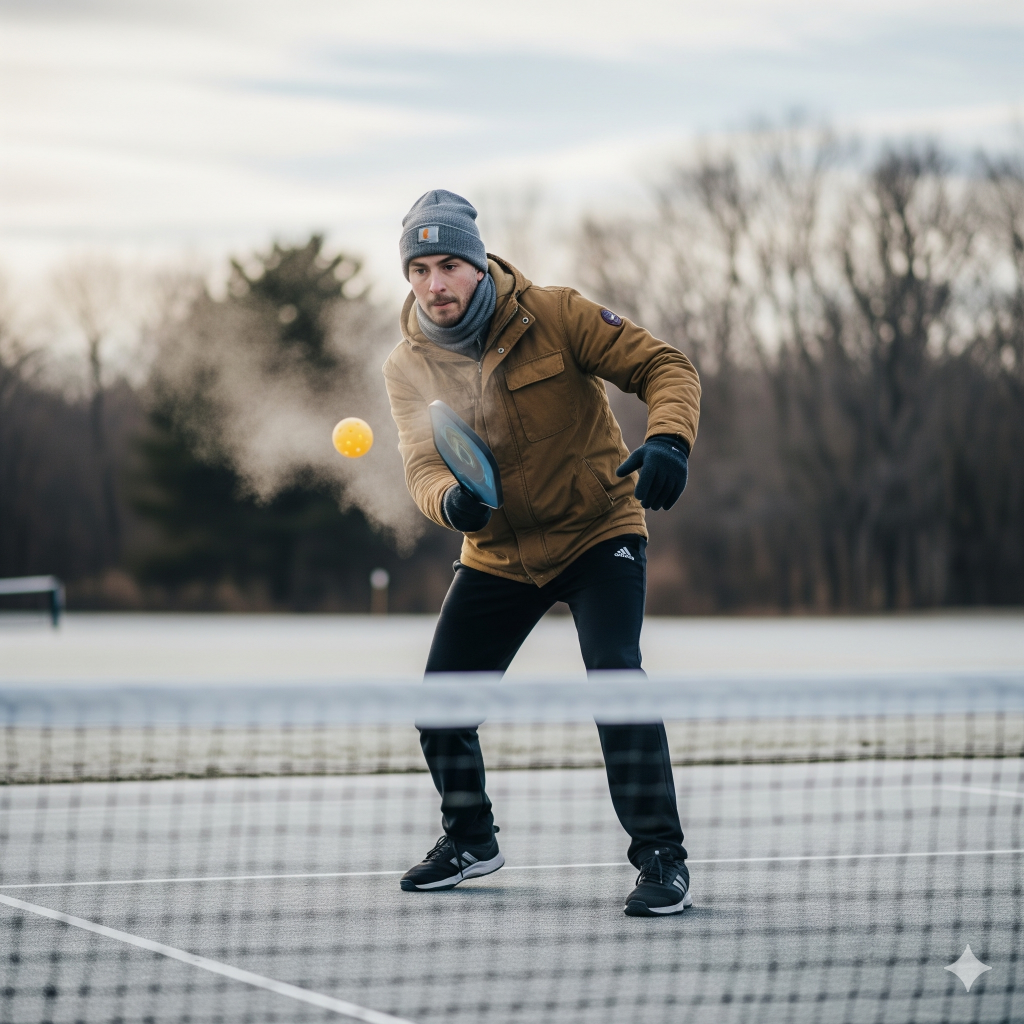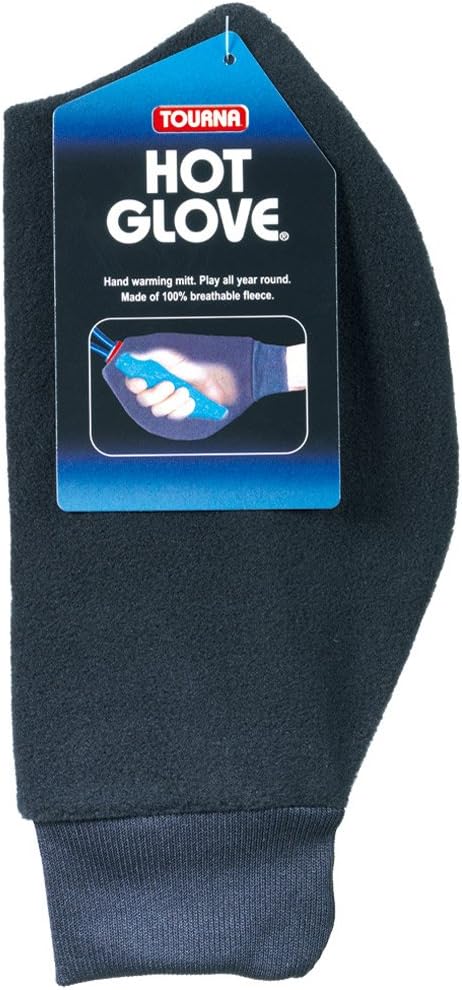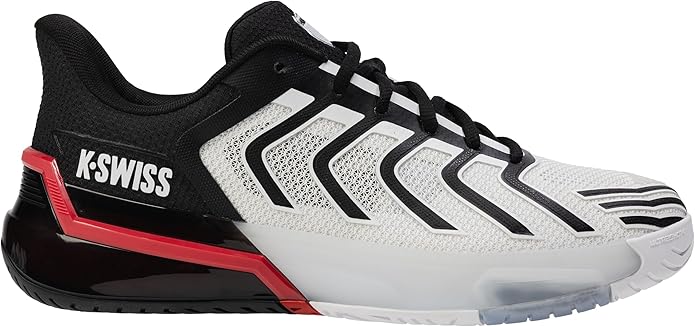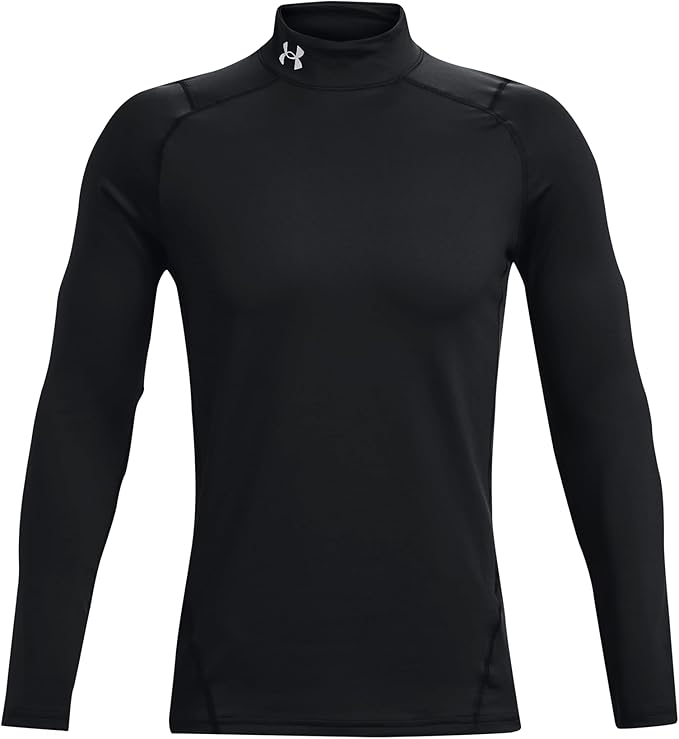Last Updated on December 7, 2025 by Drew Pierce

To play pickleball in the cold, wear layers (base, fleece, wind shell) and use a softer ball like the ONIX Fuse G2 to prevent cracking, which happens below 45°F. Expect the ball to feel harder and bounce lower. To avoid injury, double your warm-up time to 15 minutes and wear court shoes with deep tread.
Don’t let dropping temperatures send you into hibernation! Playing pickleball in the cold presents a unique set of challenges, from what to wear to how the ball flies. But with the right preparation and a little know-how, you can stay on the court all year long.
This guide answers all your burning questions about playing pickleball in chilly weather, offering simple, thorough, and ridiculously helpful advice.
Gear & Clothing: Layering for Success
What should I wear to play pickleball in the cold?
The key is smart layering. This allows you to add or remove insulation as you warm up and cool down.
- Base Layer: Start with a thin, moisture-wicking material like synthetic polyester or merino wool. This layer pulls sweat away from your skin, which prevents you from feeling cold and clammy.
- Mid Layer: Add a light fleece or an insulated vest. This layer traps heat and provides warmth without being bulky.
- Shell: A windproof or water-resistant jacket is essential. It protects you from the elements while allowing you to adjust your core temperature with a zipper.
- Bottoms: Thermal tights worn under joggers or lined leggings will keep your legs warm.
- Feet: Choose wool-blend socks to keep your feet warm and dry. On very cold days, consider adding toe warmers.
- Head & Ears: A significant amount of heat escapes from your head, so wear a beanie or an ear band.
- Hands: Wear thin, grippy gloves to maintain your feel for the paddle. Golf rain gloves or pickleball-specific gloves with a tacky palm work well.
❄️ 5 Winter Warrior Essentials
| Item | Top Pick | Why You Need It | Check Price |
|---|---|---|---|
 |
ONIX Fuse G2 Balls | Resists cracking in freezing temps | View Deal |
 |
Tourna Hot Glove Mitt | Keeps hand warm, grip bare | View Deal |
 |
HotHands (10-Pack) | Instant heat between points | View Deal |
 |
K-Swiss Ultrashot 4 | Deep tread for slick/damp courts | View Deal |
 |
Under Armour ColdGear | Keeps core warm without bulk | View Deal |
Won’t gloves mess up my grip?
Not if you choose the right kind. Look for gloves with thin, tacky palms. If you hate playing with gloves, keep hand warmers in your pockets and warm your hands up between points.
Any footwear changes?
Stick with your regular court shoes, but make sure they have a fresh, deep tread. Cold courts can be slick, and worn soles combined with dew or frost are a recipe for slipping. Always avoid playing on wet or icy courts.
Is cotton okay?
Skip the cotton. It holds sweat, gets heavy and clammy, and will make you feel colder.
Balls, Paddles & Grips
Do pickleballs really crack more in the cold?
Yes, they do. The plastic becomes brittle in temperatures below about 40°F (4°C), making balls much more prone to cracking. Always bring extra balls and consider keeping your spares in a pocket or an insulated pouch with a hand warmer to keep them warm.
Which balls are best for cold weather?
Look for softer, higher-durability outdoor balls that are marketed for cooler temperatures. If your group is constantly cracking balls, consider using an indoor-style ball—just be sure to check with your group and league rules first.
Does cold damage my paddle?
The cold itself won’t usually “kill” a paddle, but you should avoid leaving it in a freezing car or trunk. Extreme temperatures can stress the adhesives and edge guard, which can shorten the paddle’s lifespan. Remember to wipe it dry after playing to prevent moisture from freezing.
My grip feels slippery/stiff. What now?
Put on a fresh overgrip with good tack. You can also try a slightly thicker overgrip for added warmth and cushion. To manage moisture, keep a small towel and a dry-grip product (like rosin or spray) in your bag.
Warm-Up, Heart Rate & Breathing
How long should I warm up in the cold?
At least 10–15 minutes. Cold muscles are more susceptible to strains and pulls. Focus on dynamic movements like leg swings and hip circles, and prepare your joints with wrist and ankle rotations. Get in some light footwork and mini-rallies before taking full swings.
What happens to my heart rate in the cold?
Cold can cause your heart to work a bit harder initially, but once you start moving, your heart rate often feels steadier than it does in hot weather. Listen to your body and use your rate of perceived exertion (RPE) rather than chasing a specific number on your watch.
I get winded in cold, dry air. Tips?
Try to breathe through your nose when you can. If that’s not possible, wear a buff or neck gaiter over your mouth and nose to help warm and moisten the air you’re breathing. If you have asthma, talk to your doctor about your inhaler plan for cold-weather exercise.
Court Conditions & Safety
What’s “too cold” to play?
This is a personal call, but here’s a simple guide:
- Above 40°F (4°C): Fine with layers, but expect balls to crack more often.
- 20-39°F (-7 to 4°C): Playable for prepared players, but prioritize a long warm-up, proper footing, and shorter sessions.
- Below 20°F (-7°C) or Icy/Windy: This increases the risk of falls and frostbite. It’s best to find a different day to play.
Slippery courts are the number one cause of falls. Before you play on a damp morning, review the 11 most common pickleball injuries so you know the risks.
Is it safe to play on damp or frosty courts?
Absolutely not. Even a light sheen of moisture can turn a court into an ice rink. If you see or feel any moisture underfoot, wait for it to dry or reschedule your game. If not, you are begging for a problem.
Does hydration still matter in the cold?
Yes! You still sweat in cold weather, and cold can increase urination. Sip water or a light electrolyte drink. A warm beverage in a thermos is a great way to stay hydrated and warm.
Tactics & Technique
Why does the ball feel “dead”?
Cold air is denser and the balls themselves get stiffer, resulting in a lower bounce and less lively shots.
How should I adjust my game?
- Dinks & Drops: Soften your hands at the kitchen. The ball won’t pop up as much, so you’ll want to be ready for a lower bounce.
- Clearing the Net: Aim a little higher over the net on your dinks and drops to give yourself more margin for error.
- Movement: Keep your feet active with short, choppy steps. This helps fight the “cold cement legs” feeling.
- Wind: Use the wind to your advantage. Add pace and height when hitting into the wind, and take some off when hitting with it.
Recovery & Aftercare
Best cool-down for cold days?
Do 2–3 minutes of light movement followed by gentle stretches for your calves, hamstrings, hips, and shoulders. Then, dry off and change into a dry top to avoid post-play chills.
Any special skin care?
A thin layer of lip balm and hand lotion can go a long way. The wind and cold air can crack your skin quickly.
Quick Cold-Day Checklist
Before you head out, do a quick review of your gear:
- Layers (base, mid, and wind shell)
- Beanie or ear band & wool socks
- Thin, grippy gloves + hand warmers
- Extra balls (kept warm)
- Fresh overgrip + towel
- Water/electrolyte drink + warm beverage
- Flashlight or headlamp for shorter days (optional)
- A healthy dose of common sense—don’t play on wet or icy courts!
